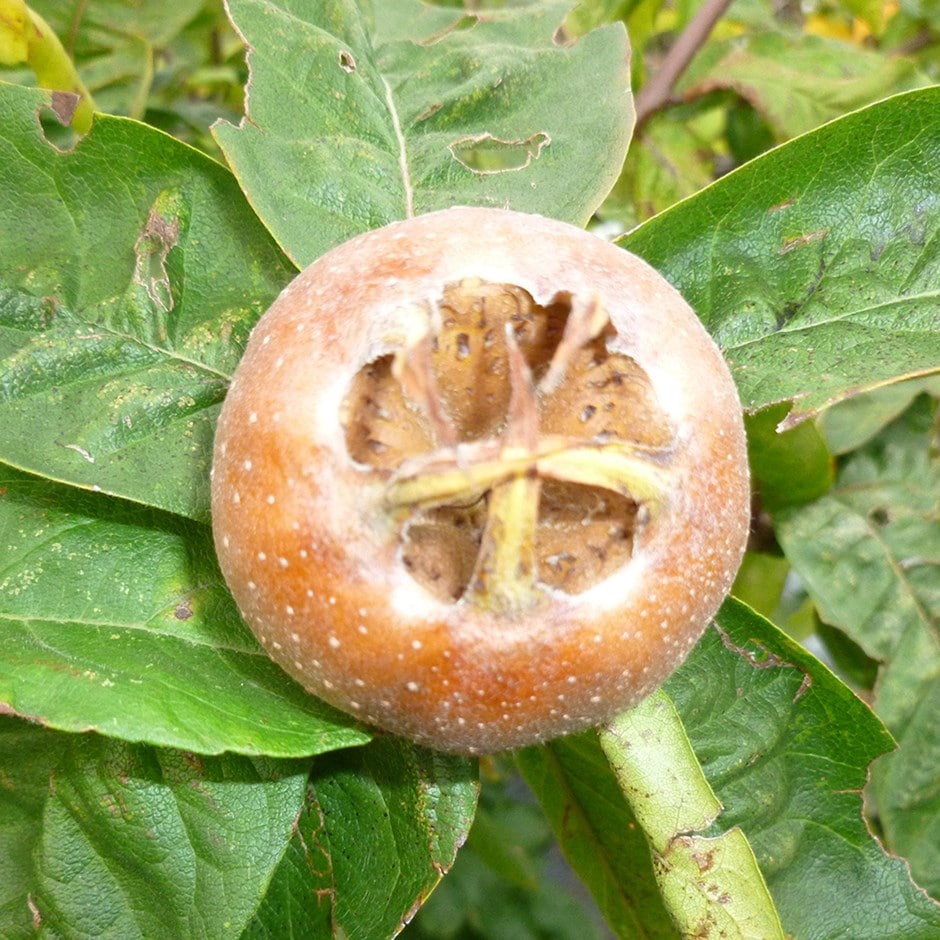medlar 'Breda Giant'
medlar (syn. Mespilus germanica 'Breda Giant')
This plant is deciduous so it will lose all its leaves in autumn, then fresh new foliage appears again each spring.
- Position: full sun
- Soil: moderately fertile, moist but well-drained soil
- Rate of growth: average
- Flowering period: April to May
- Hardiness: fully hardy
'Breda Giant' stands out as a large-fruited medlar cultivar originating from the Netherlands, renowned for its plentiful yield of russet-brown fruits measuring up to 5cm (2in) in diameter. Once fully ripened, these fruits boast a delightful sweetness and fine texture, ideal for crafting delectable sauces and preserves. Belonging to the same family as hawthorns, medlars are adorned with beautiful white, cup-shaped flowers in late spring, and trace their roots to the southeastern coastal regions of the Mediterranean and southwestern Asia, enjoying a rich cultivation history spanning over a millennium across regions from Iran to England. This cultivar forms a small, spreading tree adorned with oblong, leathery green leaves that transition to yellow-brown hues during autumn.
When planting your medlar, prepare a hole up to three times the diameter of its root system. Fork over the base of the pit in readiness, incorporating plenty of organic matter into the backfill and planting hole. Avoiding frozen and waterlogged soil, trees should be planted out as they arrive. If you've ordered a bare root tree, soak the roots in a bucket of water for half an hour prior to planting, or if this is not possible, they can be heeled in temporarily, covering their roots with soil, or potted up. Choose a sheltered spot to protect emerging blossom. Remove dead, diseased and crossing branches while the tree is dormant during the winter months, shortening any overly long branches so they don't droop. After picking the fruits, they should be left to ripen for several weeks until the flesh has turned brown, soft and sweet and can be scooped out with a spoon.

